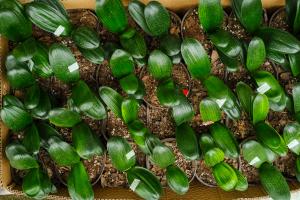How to Plant Water Lily in an Earth Bottom Pond
Water lilies are iconic aquatic plants with floating leaves and beautiful, fragrant flowers. These plants not only add aesthetic beauty to your pond but also provide shade, habitat for fish, and help balance the ecosystem. In this article, we will go over the steps to properly plant water lilies in an earth bottom pond.
Step 1: Choose the Right Variety of Water Lily
Before you start planting, it is important to choose the right variety of water lily that will thrive in your pond. This will depend on the size of your pond, the depth of the water, and the amount of sunlight your pond gets.
For smaller ponds, choose small or miniature water lilies. If your pond is deep, choose a variety that can handle deeper water. And if the pond is in partial shade, choose a variety that can tolerate less sunlight.
Step 2: Prepare the Planting Site
The next step is to prepare the planting site. Choose a spot where the water lily will get enough sunlight and is protected from strong winds. Clean the planting area of any debris or weeds to ensure there is enough clear space for the water lily to grow.
Then, create a planting hole that is at least 18 inches deep and wide enough to accommodate the plant's root system. The depth of the planting hole will depend on the size of your water lily and the depth of your pond. Fill the hole with water until it reaches the appropriate depth.
Step 3: Plant the Water Lily
Now it's time to plant the water lily. Gently remove the plant from its container and trim back any damaged or excess roots. Place the plant into the planting hole, making sure the crown of the plant is above the water level. Then, gently push the soil around the roots and add a layer of sand or pea gravel on top to help anchor the plant in place and prevent the soil from washing away.
Make sure the water level in the pond is high enough to cover the lily pads. If necessary, adjust the water level accordingly. It's also important to fertilize the water lily with a slow-release aquatic plant fertilizer according to the manufacturer's instructions. This will help the plant grow and establish itself in the pond.
Step 4: Maintain Your Water Lily
Once you've planted your water lily, it's important to maintain it properly. Make sure the water level is kept consistently at the correct depth and sunlight is sufficient. Remove any dead or yellowing leaves and prune any overgrowth to keep the plant healthy.
It's also important to keep an eye out for pests and diseases that can affect your water lily. Look out for signs of aphids, spider mites, or other pests, and treat them as soon as possible.
Conclusion
Planting water lilies in an earth bottom pond can add a stunning and natural element to your backyard. With the right variety, a proper planting site, and consistent maintenance, your water lilies will thrive and add beauty to your pond for years to come.

 how many times do yo...
how many times do yo... how many planted tre...
how many planted tre... how many pine trees ...
how many pine trees ... how many pecan trees...
how many pecan trees... how many plants comp...
how many plants comp... how many plants can ...
how many plants can ... how many plants and ...
how many plants and ... how many pepper plan...
how many pepper plan...





























